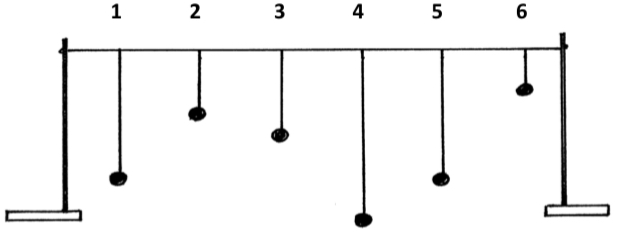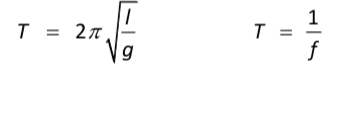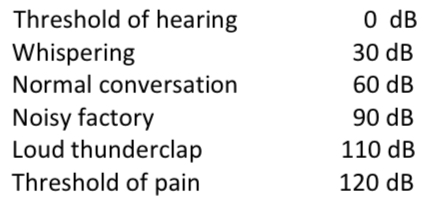Resonance
1/19
There's no tags or description
Looks like no tags are added yet.
Name | Mastery | Learn | Test | Matching | Spaced |
|---|
No study sessions yet.
20 Terms
Natural frequency
When a system that is capable of vibrating is made to vibrate, it will do so at its natural frequency.
Forced frequency
When an external vibration force acts on a system that is capable of vibrating, the external force provides the forced frequency. For example, touch a vibrating tuning fork to a string and the string will vibrate at the same frequency as the tuning fork. The tuning fork is the forced frequency.
Resonance
The transfer of energy between two bodies of the same natural frequency.
How does Resonance Occur?
Happens when a vibrating system responds with maximum amplitude to a forced frequency. An example would be a singer who shatters a wine glass. The wine glass is the system capable of vibrating. It has a natural frequency. The sound from the singer provides the forced frequency. When forced frequency equals the natural frequency resonance happens. The glass shatters.
Demonstration of resonance: (Barton’s Pendulums)
A number of pendulums are arranged as shown above.
Pendulum 1 is made swing in and out of the plane of the page.
All the pendulums start to swing a little but pendulum 5 swings most.
Pendulums 1 and 5 have the same length and therefore the same natural frequency.
Energy is transferred back and forth between the pendulums of the same natural frequency.

Formulae for tension of a string

Formula for the natural frequency of a stretched string:

Fundamental frequency of n harmonics formula:

Longitudinal standing waves: (pipe closed at one end):
It is possible to make the air vibrate in a pipe which is closed at one end and open at the other end.
The air can vibrate at certain frequencies and these are called the harmonics.
There will be a node at the closed end and an antinode at the open end.
You will notice that only the odd harmonics are possible for the pipe closed at one end.
Musical instruments based on this are called poor quality instruments since only the odd harmonics are available.
Examples are: clarinet, trombone, saxophone

Longitudinal standing waves: (pipe open at both ends)
It is possible to make the air vibrate in a pipe open at both ends
The air can vibrate at certain frequencies and these are called the harmonics
There is an antinode at both open ends
You will notice that all the harmonics are possible.
Musical instruments based on this are called good quality instruments since all the harmonics are possible.
Examples are : tin whistle, flute, pan pipes

Definition of sound intensity:
Sound energy per second per unit area.
Formula for sound intensity given sound energy.
Sound intensity = sound energy/(s x m²)
Sound intensity given the power at which sound is emitted.
Sound intensity = power sound is emitted by source/ m²
How to find the sound intensity given the power of the source and area which the energy passes through.
Sound intensity = sound energy per second(Power) / 4(pi)R²
What is the frequency range of audibility for the human ear?
Between 20Hz and 20,000Hz
Threshold of hearing
The lowest sound intensity the human ear is capable of hearing. (Around 1 × 10^-12 Wm^-2 assuming a 1000 Hz frequency)
Threshold of pain
The maximum sound intensity the human ear is capable of hearing without causing damage to hearing (1 W m^-2 assuming a 1000Hz frequency )
What is the relationship between sound intensity and decibel level?
If sound intensity doubles, it increases by 3dB
Decibel Adapted Scale (dBA):
Sound level meters use special filters to emphasise sounds with frequencies values between 2 000 Hz and 4 000 Hz. Higher and lower frequencies are attenuated ( partially blocked out ).
The human ear is most sensitive to sounds within this frequency range.
These frequencies can cause most damage to the human ear. They cause resonance in the human ear canal.
• The decibel adapted scale takes into account the fact that the human ear is more sensitive to certain frequencies of sound.

explain why the same note on different instruments sounds different?
Different instruments emit a different fundamental frequency plus different combinations of harmonics/overtones.